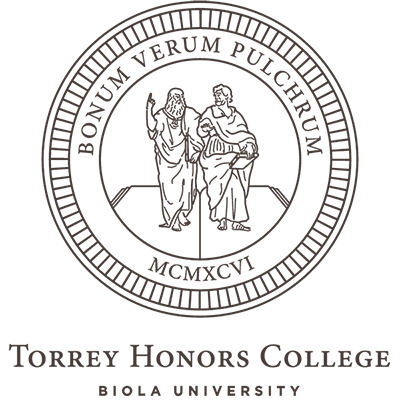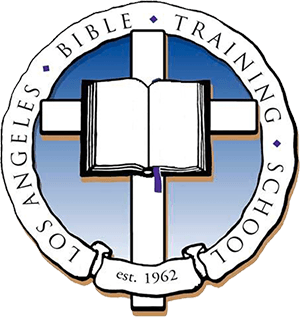A scene from The Canterbury Psalter (12th century)
Uncategorized
Invisible Missions as Soul-Seals
The chapter on the Trinity in the new Oxford Handbook of Deification is assigned to Gilles Emery, OP. It’s a perfect match of author and topic (characteristic of this handbook’s taut editing), and Emery’s chapter (34, pages 562-575) is excellent in every way. Central to Emery’s Thomistic account of “Deification and the Trinity” is the connection he traces from the eternal processions, through the trinitarian missions, to the experience of salvation. Precisely because the topic of deification is the ultimate goal of the chapter, Emery has to put in place some clarifying exposition of the doctrine of the invisible missions of the Trinity. Emery has written extensively elsewhere on this oft-neglected sub-sub-doctrine, but I was struck by how much he managed to fit into the key 363-word paragraph in this Handbook chapter. Here it is, followed by a few remarks: By “invisible missions,” the…
Teaching About the Trinity to Children
Here are some suggestions I’ve shared in a few places for how to teach the doctrine of the Trinity to children. Consider me an amateur as a teacher of young kids—I do serve a regular rotation with the first-to-fifth graders at my church, so I’m drawing from some experience, though not a deep well of it— but an expert on the doctrine side. These suggestions are especially designed to help with any complex doctrine, but I have in mind the Trinity above all. Think About Delivery Yes, bracket the subject matter for just a moment and consider how you’re presenting yourself as a communicator. Are you a friendly, trustworthy adult who looks like they enjoy talking to kids? Is the chance to talk about God and the Bible something that you delight in? Show it. When it comes to complex doctrines like the Trinity,…
He Set Forth his Good Pleasure in Christ (Eph 1:9)
As I work on my theological commentary on Ephesians, I usually follow pretty predictable tracks. Ephesians has drawn centuries of excellent interpretation, including some powerful recent scholarship from professional exegetes. But sometimes I find myself “falling down a hole,” stumbling into discoveries I had not expected, and catching glimpses of things none of the commentaries have prepared me for. On those occasions, I give myself permission to follow the subject matter where it leads, and to write freely without worrying about word count or, frankly, audience. Something like that happened this week with the inconspicuous words “which he set forth in Christ” in Eph 1:9. It got hold of me, and I produced about 1400 words of comment on a phrase that is only four words in Greek. No doubt I will edit this down to something briefer before publication. A sense of due…
Cartesian Tweaking of Trinitarianism
In his intro to the new translation of Campegius Vitringa’s Fundamentals of Sacred Theology, Levi Berntson describes how Vitringa, in numerous other works, defended the traditional (Nicene) doctrine of the Trinity, and in particular the eternal generation of the Son. Vitringa had written his 1679 dissertation about the exegetical basis of the doctrine of eternal generation, so when the doctrine came under critique about a decade later, Vitringa was well prepared to engage the arguments. What was the critique, and what were the arguments? Here’s Berntson’s summary: When controversy arose at Franeker during the late 1680s, Vitringa found himself as the lead defender of orthodox Trinitarian theology in Friesland. At this point in his teaching career, he entered into a series of debates with Röell, who was professor of theology and philosophy at Franeker from 1685 to 1704. Based on a strongly Cartesian doctrine…
“Intelligible Patterns in the Mysteries of Grace”
God has imprinted truth and meaning into the history of salvation, making that history not just a series of events in which he did something, but a carrier of revelation. The sequence of divine actions and human responses is so structured that it communicates, by design, something about God that could not be communicated otherwise. That history is, in a word, an economy: a deliberately arranged medium bearing a divinely appointed message. Looking down on it from above, salvation history is like a wax seal that has received (and until the eschaton, within certain established lines, is still receiving) the impression of the signet. That signet signifies authoritatively the personal presence of its owner. In Ephesians 3:9-10, Paul says that his purpose is “to bring to light for everyone what is the plan of the mystery hidden for ages in God, who created all…
Parable of the Land Surveyor
This is the eulogy I delivered for my stepfather-in-law, William Ralph Paris, on Sept 25, 2024 in western Kentucky. I should have spoken a little more about the presence of music in his life. The music at the memorial service included a traditional shape-note performance of “There is a Happy Land” and a congregational singing of “Higher Ground.” Both songs are appropriately land-related and old-fashioned. Family, friends, loved ones, and neighbors, We are gathered here today to remember the life, and to mourn the death, of William Ralph Paris, Jr. It’s not exactly clear to me what I should call him, because he went by many names: William and Ralph, of course, but also Will, Rodney, Rodsey, Papa Will, Papa, and several more context-dependent names and nicknames. He also handed out nicknames for others: he always called me Sir Frederick Von Sanders, which is…
“Seemliness of Jehovah” (decentia divina)
Looking into the root and meaning of the divine name Jah, Johannes Cocceius opened up a suggestive line of thought which later Protestant theologians developed further. And I think it deserves more consideration as a useful, fruitful way of thinking. Here are some quick notes to mark the trailhead. Cocceius thought the name Jah came from a Hebrew root meaning “fitting” or “seemly.” Here’s a report on Cocceius’ deliberations; I take the summary from DeMoor’s Continuous Commentary because that’s available in English (thanks to Steven Dilday; original Latin here). The Most Illustrious COCCEIUS, in his Lexico Hebraici, root יאה , thinks that it is able to be derived from the root י אָה , to be fitting/ seemly, so that it might primarily denote God’s beauty, comeliness; which root occurs only once in the Old Testament, Jeremiah 10:7, , כַ֥י לְַּךָ֖ יַּ א֑ תה…
Augustine in God’s Word
The library of the Dominican monastery in Engelberg, Germany has a twelfth-century copy of Augustine’s Confessions. On the opening page is an illustration (an illumination) of Augustine in prayer. The bishop is tangled up in the first letter of the manuscript, a large letter M. This is mainly just conventional manuscript illumination. Art historians even have a name for a large initial capital letter with a figure painted into it: they call it a historiated capital (or a historiated initial). You see them all the time; they lively up the text. But there’s something special about this one, because it really does illuminate something about Augustine’s Confessions. If I were to ask what the first line of the Confessions is, most people who know the book would reply, “Our heart is restless until it rests in you,” or the longer version, “You have made…
Great Doctrinal Deductions vs Sentimentalism
I’ve been pondering these lines from a Martin Lloyd-Jones sermon on Eph 1:6. I don’t think they are in the published version of the sermon, and I don’t know the MLJ canon well enough to footnote it, but here’s what he says as he gets ready to preach on God accepting us “in the Beloved:” Now facts are very important but facts in and of themselves are not sufficient. A number of people may look at the same facts and may interpret them in a different manner, so that it is essential to our salvation that we should know something of the meaning and the significance of the facts as well as of the facts themselves. There are many for instance who no doubt during these coming days will consider certain facts, but they’ll sentimentalize them, they won’t draw any great doctrinal deductions from…
“Son” without Eternal Generation?
To maintain eternal sonship without linking it to eternal generation is to take up a theologically eccentric position. It is eccentric not just in the sense of being outside the mainstream of the Christian doctrinal tradition, but also in the sense of being a kind of mixed view, an uncentered position midway between the logic of consistent Nicene Trinitarianism and the logic of consistent Socinianism. In the hands of conservative theologians who place a high value on careful reading of Scripture, the resulting doctrine exhibits very little actual resemblance to Socinianism. In fact, such theologians can remain in such close proximity to a Nicene-style Trinitarianism that the differences rarely emerge into view. After all, they affirm the full divinity of Christ, his eternal Sonship, and the Triunity of persons in the one Godhead. That’s certainly not nothing! But for a variety of reasons, they…
The Holy Spirit Bridges the Gap (Sermon)
Here’s the video (below) and the manuscript (below below) of a sermon I preached at my church, Grace Evangelical Free Church of La Mirada, on July 28, 2024. We’re preaching through Acts, and when my turn came up in our team-preaching plan, the assignment was to open up Acts 9:32-11:18. It’s a long section (77 verses?) but it’s easy to see how it all goes together. The Holy Spirit Bridges The Gap (Fred Sanders) from Grace EV Free on Vimeo. I. The Word and the Spirit There is a great moment I want to direct your attention to this morning.It’s a dramatic moment in Acts when the apostle Peterpreaches the message about Jesus, and then the Holy Spirit falls on the listeners. That’s the moment: the word goes out, and the Spirit descends.–Out it goes, down it comes, and when they meet, –people are…
Three Things Are Too Difficult For Me
I hope it’s obvious that I freely and confidently affirm and teach the doctrine of the Trinity. In fact, while I love to lose myself in the details and ponder the complexities of it, I am especially devoted to making sure the main things are the plain things and the plain things remain the main things. I try to teach the old-fashioned, standard, broadly consensual doctrine of the Trinity. Ask me hard questions and I’ll do my best to be thoughtful and responsible, but you can expect me to point to the Bible and to standard Christian confessions. Normie Trinity believer is all I aspire to be. Scratch me and you’ll get the Gospel of John and the theology of Nicaea. And yet, there are some important elements of the doctrine that seem almost impossible to state in a way that lets the mind…
“Many a Bridge:” Reading Tennyson’s In Memoriam in Cambridge
The Torrey Cambridge summer course reads short works by authors with a Cambridge connection. The works chosen this year are all related to themes from Colossians, so we’ve read sermons by Simeon (preached at Holy Trinity & Kings College Chapel), commentary by John Davenant (from his first course taught here as Lady Margaret Professor of Divinity), and C.S. Lewis on how reading old books is like travelling to a foreign country. We also read Alfred Lord Tennyson’s great book In Memoriam, a set of 131 poems about grief and faith. In Memoriam was once very well known and greatly esteemed. Of all the books we cover in our summer curriculum, it’s the one most likely to earn a secure spot on an official “Great Books” list, both by reputation and by inherent worth. In Memoriam is a very Cambridge book in multiple ways. In…
Elucidarium (Honorius)
I can’t help but like the Elucidarium, a little book of popular-level theological instruction from around the year 1100. It’s written in dialogue form, sort of as a reverse catechism in which students ask questions and a teacher gives brief answers. Here’s how the section on the Trinity goes: Pupil: In what way is the Trinity understood as one God?Master: Look at the sun, in which there are three: a fiery substance, brightness, and warmth, which are inseparable to such an extent that if you should wish to take the brightness out you would deprive the world of the sun, and, again, if you should try to remove the heat, you would lack a sun. Therefore, in the fiery substance, understand the Father, in the brightness, the Son, and in the warmth, perceive the Holy Spirit. Pupil: Why is he called Father?Master: Because he…
Alanus de Lille’s Vision of Order
When C.S. Lewis took the chair of Medieval and Renaissance Literature in Cambridge, he knew it would be hard work to convince his new university, with its greater proportion of scientists than at his alma mater Oxford, to consider his extremely old-fashioned subject matter. For Lewis, ‘old-fashioned’ meant mainly the fully integrated, pre-scientific view of the cosmos: classical planets circling the central earth in nested crystalline spheres, and the whole thing moved by one great ontological desire for God. He gave a two-part lecture called “Imagination and Thought in the Middle Ages,” not published at the time but later gathered with some other leftovers in Studies in Medieval and Renaissance Literature. Walter Hooper rightly says these lectures “amount almost to a précis of The Discarded Image,” (viii) but written specifically with scientists in mind. In these lectures, Lewis is not so much introducing potential…
How to Read a Charles Simeon Sermon
Charles Simeon (1759-1836) published sermons on the whole Bible. Or rather, he produced a kind of commentary on the whole Bible in the form of sermons. Or rather, he worked through the whole Bible showing how each passage could be preached effectively, with a constant eye on the gospel. Whichever way of describing his undertaking is most accurate, what Simeon produced is a massive, multi-volume set of sermons spanning the canon of Scripture; the Horae Homileticae.1 They are expanded outlines, or “discourses in the form of skeletons,” intended to teach preachers to preach. And if you want to read some of them (let’s say I assigned 25 sermons on Colossians for a summer course, PDF here), you should bear in mind that these are not just sermons, but worked lessons in homiletical understanding of the Bible. Here are a few methods and hints for…
Choral Evensong Notes (Torrey Cambridge 2024)
On Tues 7 Feb at 6pm, the choirs of King’s and St John’s Colleges will be singing choral evensong in St John’s College Chapel. On this summer trip, we normally try to attend evensong in King’s College chapel as an opportunity to be in that especially special space with its famous fan-vaulted ceiling. (Students who want to do this on their own can attend worship at King’s on Fri, Sat or Sun.) But of course St. John’s chapel is also wonderful, and a double choir is especially powerful. Here is the order of the musical portions of the service, which I’ve fitted with links for students who want to study up in advance for what they’ll be hearing during the service (of course you can also refer back to these links after the fact, in case you prefer to keep exploring at leisure what…
Immersive Rereading: Colossians
Any chance I get, I introduce students to a classic form of Bible study that I call immersive rereading. It’s a simple method that has been around for ages, and has gone by many different names.1 Immersive rereading may not be the most elegant name, but it captures the goal (become immersed in the message of book of the Bible) and the technique (read it over and over). Choose a short book of the Bible and an extended span of days. For me this usually means a 4-6 chapter epistle and three weeks, because usually I get to assign this kind of work in an intensive summer course. A week would be far too short to get the benefits; a semester too long for most people to maintain their focus. This summer I’ve got about 30 students in Cambridge immersively rereading Colossians (4 chapters,…

Fred Sanders is a theologian who tried to specialize in the doctrine of the Trinity, but found that everything in Christian life and thought is connected to the triune God.


